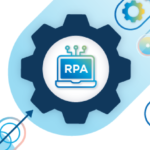How Have Printed Circuit Boards Evolved over the Decades?
 It’s easy to forget that the roots of modern electronics date back more than a century ago. Smartphones, tablets, telecommunications – none of these breakthroughs would have been possible without the evolution of the printed circuit board.
It’s easy to forget that the roots of modern electronics date back more than a century ago. Smartphones, tablets, telecommunications – none of these breakthroughs would have been possible without the evolution of the printed circuit board.
It is commonly believed that the PCB was invented in 1936 by Austrian engineer Paul Eisler, who used the first printed circuit as part of a radio set. However, the concept of the PCB dates back well over a century when German inventor Albert Hanson experimented with flat foil conductors that were laminated to an insulating board in 1903.
Electronics developers have come a long way since then. Today, companies such as Circuit Studio provide user-friendly software for the seamless design of printed circuit boards. Although PCBs may not seem as innovative as they once did, a quick look at the history of this technology will reveal how impactful the printed circuit board has been over the last century:
Pre-World War II
1903: German inventor Albert Hanson wrote about the use of flat foil conductors that were laminated to an insulating board with several layers.
1913: According to Science Direct, Max Schoop patented the technique of flame-spraying metal onto boards using a patterned mask. That same year, Arthur Berry patented the print-and-etch method in England.
1927: Charles Ducas patented the technique of electroplating circuit patterns.
1936: Paul Eisler, an engineer from Austria, invented the printed circuit as a component in a radio set.
World War II to the 1950s
1943: Electronics engineers in the United States began using PCB technology on a large scale to produce proximity fuses for military purposes.
1947: Electronics engineers introduced the first double-sided printed circuit board.
1949: Stanislaus F. Danko and Moe Abramson created the Auto-Sembly process, which involved inserting component leads into copper foil interconnection patterns and then dip-soldering. This technique was patented in 1956 by the U.S. Army. It was a major breakthrough that evolved into the printed circuit board development process we use today.
1956: U.S. Army scientists patented a new process of assembling electrical circuits, which involved photographing a wiring pattern to a zinc plate.
1960s to the 21st Century
1960: Electronics engineers began producing multilayer printed circuit boards.
1995: Printed circuit board production in the United States reached $7.1 billion. Also, the introduction of micro-via technology in PCB production opened the door to high-density interconnect PCBs.
2000: Printed circuit board production in the United States reached $10 billion.
How Do PCB Developers Create Modern Printed Circuit Boards?
The process of developing printed circuit boards is constantly evolving. Today, with more than 350,000 potential components on a PCB, engineers have plenty of opportunity to get creative.
Perhaps the most significant breakthrough in PCB technology over the last decade is the introduction of electronic design automation software. These platforms make the process of creating a PCB less tedious and time consuming by providing a user-friendly editing interface, the ability to order PCB components in real-time, 3D modeling and other helpful features.
As you probably guessed, the process of designing modern PCBs is far different from the techniques used in the mid-20th century. The general method involves:
- Using electronic design automation software to build a schematic capture;
- Choosing the template and card dimensions based on the case and circuitry of the PCB;
- Determining the positions of components and heat sinks;
- Deciding the layer stack of the printed circuit board;
- Determining the line impedance based on dielectric layer thickness, trace-width and routing copper thickness;
- Placing the PCB components and considering the geometric and thermal logistics;
- Routing signal traces;
- And finally, generating Gerber files for manufacturing.
What’s Next?
Over the last decade, electronics engineers have been miniaturizing printed circuit boards to make them more powerful and compact. This trend will likely continue.
As Circuit Studio and other companies refine electronic design automation software, both novice and professional developers will be better able to evolve PCBs. This could lead to major breakthroughs that define electronic technology in the mid-21st century.





